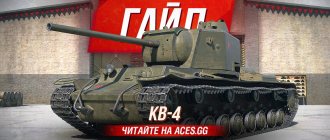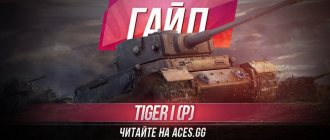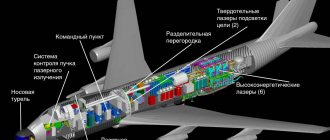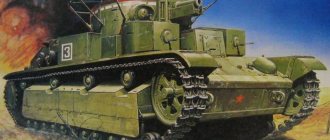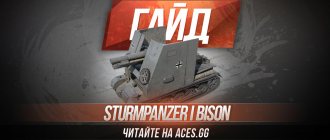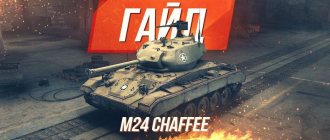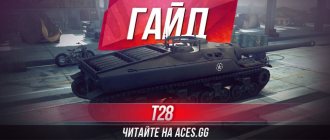"Furutaka" and others: the birth of Japanese giants
The Battle of Tsushima in 1905 was an outstanding victory for the Japanese fleet. However, the appearance on the scene of turbine ships and dreadnought battleships suddenly canceled out all its results - Japan, like other maritime powers, had to build an ocean-going fleet anew. This meant that the Japanese needed a new light cruiser concept that would take into account both the achievements and shortcomings of existing ships. If previously the Japanese fleet operated in the half-closed Yellow and Sea of Japan, now the entire Pacific Ocean became its zone of operation, and new requirements were placed on reconnaissance cruisers.
Background. Descendants of "Angara"
Japanese reconnaissance cruisers performed admirably in the Russo-Japanese War. They accompanied the squadrons, conducted long-range and short-range reconnaissance, and often could attack the enemy on their own - remember the pursuit of the armored cruiser Tsushima after the Russian armored cruiser Novik, which had broken through from Port Arthur. These ships were descended from the so-called "Elswick cruisers", built since the 1880s at Armstrong's shipyard in Elswick (England) for poor countries, inheriting from them strong weapons and high speed. The main disadvantage of the Japanese reconnaissance cruisers was their low seaworthiness and relatively short cruising range - the innate properties of the “Elswick cruisers”.
The Battle of Tsushima was a decisive victory for the Japanese fleet. However, the appearance on the scene of turbine ships and dreadnought battleships suddenly canceled out all its results - Japan, like other maritime powers, had to build an ocean-going fleet anew. This meant that the Japanese needed a new light cruiser concept that would take into account both the achievements and the identified shortcomings of existing ships. If previously the Japanese fleet operated in the half-closed Yellow and Sea of Japan, now the entire Pacific Ocean became its zone of operation, and new requirements were placed on reconnaissance cruisers.
As a result, the class of high-speed turbine reconnaissance cruisers (“scouts”) in the Japanese fleet originated from Russian ships - 1st rank ocean cruisers of the Varyag and Askold type, as well as the auxiliary cruiser Angara, captured in Port Arthur and put into operation in the spring of 1906 under the same name (in Japanese it sounded like “Anegawa”). The Japanese discovered that the 4000-ton Angara was much more suitable for performing squadron reconnaissance functions than other Japanese 2nd class armored cruisers - unlike the light Elswick cruisers, it could maintain a speed of 20 knots in any weather and use artillery (six 120-mm guns) even in heavy seas.
Diagram of the auxiliary cruiser "Angara" Source - S. Suliga. Ships of the Russian-Japanese War, M., 1993
For the first time, the Japanese tactics of using 2nd class cruisers were spelled out in the developments of Captain 3rd Rank Sato, which formed the basis of an official document entitled “Empire Defense Policy”, adopted on April 4, 1907. These ships were supposed to accompany linear formations consisting of battleships and armored cruisers on a long voyage, and their main parameters were cruising range and seaworthiness. At the same time, the power of artillery was in second place in importance, defense - in third.
Diagram of the armored cruiser "Tone", 1910 Source - Marine Collection, 1999, No. 5
Back in 1905, the first truly seaworthy light cruiser of the Japanese fleet, Tone, was laid down, which entered service only in 1910. This was the first Japanese cruiser, during the construction of which preference was given not to combat, but rather to cruising qualities - with a full displacement of 4900 tons, it developed a speed of 23 knots and had an enormous cruising range for a coal ship of 7340 miles (10 knots). At the same time, the Tone had relatively weak armament - two 152 mm guns at the ends and twelve (later ten) 120 mm guns on the sides. Before this, the largest “light” Japanese cruisers with the same or greater displacement, similar power and almost the same speed had significantly worse seaworthiness and a shorter cruising range (from 4 to 6 thousand miles), but carried heavier 203-mm guns - that is, theoretically they were intended for squadron combat. Obviously, this task was removed from light cruisers, and they turned into “pure” scouts.
Armored cruiser "Tone" Source – Ships of the Imperial Japanese Navy (Ships of the World, 1995, No. 500)
In 1912, the Japanese fleet included three new Chikuma-class cruisers - the first Japanese light cruisers with steam turbines. They were slightly larger than the Tone, carried eight 152 mm guns and had a speed of 27 knots. In addition, these ships had a full-fledged armor belt with a thickness of 89–50 mm, while the previous “light” cruisers were protected only by traditional armor bevels.
2nd class cruiser "Tikuma" Source – Ships of the Imperial Japanese Navy (Ships of the World, 1995, No. 500)
According to the “eight by eight” shipbuilding program, presented on May 15, 1910 and designed for nine years, it was planned to have a fleet of sixteen dreadnought-class ships with 356 mm artillery (this included the new armored cruiser Ibuki, but did not include the remaining ships with two main-caliber artillery systems - the dreadnoughts Settsu and Kawachi, still under construction, the pre-dreadnoughts Aki, Satsuma, Kashima, Katori, as well as the cruiser Kurama of the same type as the Ibuki). To accompany this fleet it was supposed to have eight reconnaissance cruisers - that is, four more 2nd class cruisers should have been laid down. In addition, it was planned to build an experimental special-purpose ocean cruiser with an ultra-high cruising range.
However, the program was rejected by the cabinet of ministers, and in its next edition the number of 1st class (battle) cruisers was reduced to six. But the number of light cruisers increased to ten due to another “special purpose” cruiser. This program was also rejected (this time by parliament), and only in 1914 the Cabinet Commission on Defense approved another version of the “eight by eight” program, recommending that it be passed through parliament as a program to strengthen the fleet in a stripped-down “eight by four” version. This document mentioned the construction of three 6000-ton scouts, armed with 200 mm artillery (four guns for each ship). Thus, it was the Japanese who first put forward the idea of creating heavy cruisers with eight-inch artillery, later called “Washington”.
The eight-by-four program was presented to parliament only in the fall of 1915 and approved in February 1916. At the same time, the scouts were excluded from it, and their detailed characteristics remained unknown. During the First World War, not a single light cruiser was built in Japan, and only two such ships were launched - the 3,200-ton Tenryu and Tatsuta. Carrying only four 140 mm guns, but developing a huge speed of 33 knots and having rotary 533 mm torpedo tubes, they were actually a hybrid of a “small” scout with a destroyer leader.
Scout "Tenryu" Source – Ships of the Imperial Japanese Navy (Ships of the World, 1995, No. 500)
However, during the war years in Japan, projects for “big” scouts continued to be developed. At the end of 1916, the Naval Technical Council developed a project for a reconnaissance cruiser with a displacement of 7,200 tons, a speed of 36 knots and a range of 6,000–8,000 miles, protected by a 76-mm armored belt, armed with twelve 140-mm guns (including eight in twin turrets) and four new 610-mm twin-tube torpedo tubes (torpedoes for them were still in development). One of the project options involved arming this cruiser with 200-mm guns of the 1917 model.
Finally, in August 1917, after information appeared about the laying of Omaha-class cruisers with eight 152-mm guns in the United States, the Japanese parliament authorized the construction of three scouts with a displacement of 7,200 tons costing 6,915,078 yen each. In addition, it was planned to build six improved cruisers of the Tenryu project with a displacement of 3,500 tons. However, this time the Naval General Staff itself made changes to the construction process, deciding that it was better to have eight 5,500-ton cruisers, which could also be used as powerful destroyer leaders. We were talking about the five Kuma-class cruisers laid down in 1919–1920 and the first three cruisers of the next type, the Nagara.
Diagram of the light cruiser "Tama" of the "Kuma" type (by the beginning of World War II and in its original form) Source - Morze Statki i Okrety, 2003, No. 2
Caliber and rate of fire
In accordance with the “eight by six” program adopted by the Cabinet of Ministers on May 12, 1918, three more “medium” scouts were additionally planned for construction - these became the last three Nagara-class cruisers, laid down in 1921. These ships had a range of 6,000 miles (at a speed of 14 knots), reached a maximum speed of 35 knots and carried seven 140-mm guns, as well as two twin-tube rotary torpedo tubes (at first - 533-mm, on cruisers of the " Nagara" - 610 mm).
It is believed that the Japanese chose the 140-mm caliber for the deck and casemate installations of their ships when it turned out that the 45-kilogram 152-mm projectile was too heavy for the Japanese gunners, and with rapid fire, the practical rate of fire of the guns quickly decreased. However, the 140-mm projectile weighed not much less - 38 kg. According to British Admiral John R. Jellicoe, in the Battle of Tsushima, the actual combat rate of fire of Japanese six-inch guns was 4 rounds per minute, with a table rate of fire of 5–7 rounds per minute and 12 rounds per minute during test firing. At the same time, John Campbell, in his analysis of the Battle of Jutland, points out that the rate of fire of the English deck-based 152-mm guns depended not so much on the gunners themselves, but on the speed of supply of ammunition along the open deck from the feed elevators. After the reserve in the fenders of the first shots was used up, it sharply decreased to 3–4 shots per minute. Thus, there is no evidence that in battle the Japanese artillerymen were inferior to the British in terms of physical endurance.
On the other hand, the rate of fire of 140 mm guns was actually higher - from 6 to 10 rounds per minute, depending on the feed rate. Therefore, even taking the minimum of these figures as a basis, we will see that a 140 mm gun could produce 228 kg of metal per minute, while a 152 mm gun at Tsushima produced only 180 kg per minute.
Thus, the problem was not at all in the strength of the gunners - the 140-mm caliber actually gave a gain in the weight of the salvo, while having the same (and even slightly greater) firing range. For the same reason, Russian artillerymen before the First World War chose 130 mm caliber guns for their new turbine cruisers. However, the use of lighter projectiles gave an advantage only in battles against small ships (destroyers or small cruisers), while the 140-mm projectile had too little “stopping effect” on large ships.
Obviously, the problem of the dependence of the rate of fire on the conditions on the deck of the ship and the physical strength of the sailors was solved by installing guns in towers, isolated from splashes of water, having equipment for mechanized delivery of projectiles directly from the cellars, and most importantly, providing centralized aiming of all the ship’s guns at one target using fire control devices. It is for this reason that the Technical Department of the Japanese Navy did not stop designing the “large” Class A scouts with a turret-mounted artillery. In 1918, a project for a cruiser with a displacement of 8,000 tons, armed with five or six two-gun 140 mm turrets, appeared. Placing eight new 200/50 mm guns on them was again considered as one of the options, but in the end the Japanese returned to the same 140 mm guns. The cost of one such ship in 1918 was estimated at 8,000,000 yen, and a year later it rose to 11,000,000 yen.
In 1920, this project was finally included in the famous “8 by 8 Fleet Replenishment Program”, approved at the 43rd emergency session of Parliament. It also planned to build eight more 5,500-ton “medium” scouts (class B). In this case, we are talking about Naka-class cruisers, of which six were planned for construction, but only three were laid down. These ships became the last 140-mm scouts of the Japanese fleet, if you do not take into account the detached cruiser Yubari. The latter was designed by Hiraga Yuzuru and built as an experimental small cruiser according to an additional program adopted by the Moscow General Staff in October 1921. During its creation, several innovations were worked out at once - the turret arrangement of artillery, as well as the principles of lightening the ship's structure. Hiraga tried to squeeze maximum armament and protection into the minimum weight - for example, by including armor in the strength set of the hull (this technique was later used by the Japanese when building heavy cruisers).
Diagram of the light cruiser "Yubari" Source - Breeze, 1995, No. 2
It was planned to lay down one “medium” and one “large” cruiser per year, and from 1925 – two “medium” ones. However, almost immediately everything went wrong. In 1920, Japan was visited by the flagship of the Chinese station of the British fleet, the cruiser Hawkins, which had entered service just a year earlier. The ship carried seven 190-mm guns in deck mounts and was specially designed to destroy “colleagues” - cruisers with six-inch artillery (primarily German raiders). At the same time, the Japanese received information that the Americans had increased the number of six-inch barrels on the Omaha-class cruisers under construction to twelve by installing two two-gun turrets at the ends.
As a result, the Moscow General Staff gave instructions to urgently change the design of the “big” scout with the installation of 200 mm guns on it. However, in 1921, the chief designer of the Japanese fleet and head of the technical project development department of the 4th shipbuilding section of the Technical Department of the Navy, Captain 2nd Rank Hiraga Yuzuru, proposed a completely new design for a reconnaissance cruiser, which, with 7500 tons of displacement and 35 knots, was supposed to exceed "Hawkins" and "Omaha" by the weight of the broadside.
The main advantages of the ship were the turret arrangement of the artillery completely in the center plane (with the possibility of firing all guns on one side). Six 200-mm guns in single-gun turrets (located in pyramids - three each at the bow and stern) fired 660 kg of steel in a salvo, with 544 kg from six guns at Hawkins and 381 kg from eight guns at Omaha (though without taking into account rate of fire).
Diagram of the heavy cruiser "Hawkins" Source - Alexander Donets. Hawkins-class heavy cruisers. Cruisers of Britain, 2005, issue 4
In addition, it was planned to equip the ship with twelve fixed 610-mm torpedo tubes - six tubes on each side. Measures were also taken to lighten the weight - the height of the freeboard in the middle and stern parts of the ship was reduced as much as possible, and the armor of the sides and deck was supposed to be made an element of the longitudinal frame of the hull. Strengthening this set was achieved by the continuity of a smooth deck without a forecastle. This is where the strange shape of the upper deck of all subsequent Japanese ships originates - wavy, with smooth changes in height in the most unexpected places (the British called this method of reducing the weight of the hull “amateurish”
).
After some hesitation, in August 1921, the Moscow State School accepted the Hiraga project. The cessation of construction of the battleships Kaga and Tosa (in accordance with the Washington Agreements) freed up significant funds, so the construction of cruisers was accelerated. In February-March 1922, shipbuilders were given orders for the construction of two “large” scouts, in June - for two more such ships, as well as four “Washington” type cruisers with a displacement of 10,000 tons, which did not exist at that time even in the project (later they became Myoko-class cruisers).
Class A Scouts - the first Japanese heavy cruisers
The first two Class A scouts, Furutaka and Kako, were laid down in November and December 1922, and entered service in March and July 1926 (that is, they took almost four years to build). The ships had a smooth-deck hull with a double bottom, all watertight bulkheads reached the armored deck and had no doors. Throughout the boiler rooms and engine rooms there was a longitudinal bulkhead that isolated each of the four main turbo-gear units (TGA) and was included in the longitudinal set of the hull. As a result, four independent engine rooms and seven boiler rooms (BO) were formed. KO No. 1 had two small version Kanpon coal-oil boilers, all other boilers ran only on oil - large version boilers were located in the central sections, and KO No. 6 and No. 7, farthest from the bow, were narrower and had one boiler each middle version.
Diagram of the heavy cruiser "Furutaka" Source - Breeze, 1996, No. 10
In each of the engine rooms there was one Kawasaki-Curtis or Mitsubishi-Parsons fuel turbine (high-pressure turbine with cruising stage + low-pressure turbine + small cruising/economy turbine). In addition, the casing of each low-pressure turbine housed a reverse turbine, which was normally disconnected from the shaft. The external shafts were driven by the front engine rooms, the internal shafts by the rear ones.
According to the design, the cruisers were supposed to have a standard displacement of 7,100 tons, but the construction overload turned out to be unexpectedly large for the careful Japanese, as a result, at the time of entry into service, the standard displacement of the ships exceeded 8,000 tons. For the first time in the Japanese fleet, the bow superstructure was combined with the foremast into a single tower-like complex, reducing the number of open areas to a minimum. In addition to service premises, this superstructure housed the cabins of senior officers so that they did not have to run far to combat posts.
Unlike foreign “classmates”, Japanese ships received full-fledged anti-torpedo protection, represented by small boules that somewhat extended beyond the length of the armor belt. A 76-mm armor belt made of NVNC steel, 80 m long and 4.15 m high (with an outward slope of 9°), started from the armored deck (the middle deck), and the lower edge rested against the side bulge. The belt ran along the engine and boiler rooms (also covering the space under the bow superstructure) and was closed by 105-mm armored traverses. On top, the citadel was covered with a 35-mm armored (middle) deck, and at the chimneys it had 38-mm vertical (slightly inclined inward) glacis. Additional protection was provided by the upper deck made of HT structural steel - to the usual 19 mm thick steel deck that covered the space between the sides, a 28 mm plate was added from the side to the superstructure, which served both as an element of the longitudinal power structure and as an upper armored deck. The upper deck itself was made sloping, noticeably curved upward.
The main battery cellars were outside the citadel and were protected by the so-called “box” armor. Their side walls were covered with 52 mm armor, and their transverse walls (front at the bow magazines and rear at the stern) were covered with 35 mm armor. They were also covered with the same armor on top, at the level of the lower deck. This armor did not protect even from medium-caliber shells, and therefore the main protection of the magazines was their location below the waterline - only a shell fired from a long distance and flying along an overhead trajectory could penetrate them. The vertical armor of the magazines, noticeably spaced from the side, was intended primarily to protect against explosions of mines and torpedoes. Note that the same reservation system was chosen for American cruisers.
The main caliber turrets were covered only with anti-fragmentation armor: 25 mm - front and side; 19 mm – top; 6 mm - rear. The mechanical system for feeding shells into the towers was extremely simplified with an increase in the share of manual labor, so the rate of fire from a theoretical five rounds per minute in practice decreased to two. The pipes through which shells were delivered from the cellars were protected by 16 mm armor.
Diagram of the 200-mm turret of the Furutaka-class cruiser Source - Breeze, 1996, No. 8
The tiller compartment was covered with sheets of HT structural steel (35 mm on the sides, 10 mm on the top), and the conning tower remained unarmored - this was compensated by the presence of a control post in the depths of the ship's citadel. The design speed of the cruiser was supposed to be 34.5 knots with a vehicle power of 102,000 hp, but during testing the ships showed a speed of about 35 knots, proving to be faster than the American Omaha-class cruisers (34 knots).
Heavy cruiser Furutaka Source – wrecksite.eu
It should be noted that both in terms of armament and its location, the Japanese cruisers were very reminiscent of the Soviet cruiser "Red Caucasus", especially its original design with five 180 mm guns - the same linearly arranged single-gun turrets, covered with 25 mm armor, a similar silhouette . Even the problems with the practical rate of fire of the guns turned out to be the same - the lack of experience in the development of modern turrets for medium-caliber guns made itself felt.
Comparative view of the cruiser "Furutaka" and the preliminary design of the cruiser "Red Caucasus" with five towers Source - K. Kulagin. Armament of the cruiser "Red Caucasus". Flotomaster, 1999, No. 1
Being reconnaissance ships, the ships each received one aircraft, placed disassembled in a hangar behind the stern tube. Instead of a catapult, each of the new cruisers was equipped with an original device - a 27-meter inclined rotary ramp, consisting of two parts. The rear (elevated) part was located on the third tower, and the front was shifted so that the plane at full speed could roll over any of the sides. Taking off from such a platform was difficult and dangerous, so the pilots preferred to take off the old fashioned way - from the water. In 1932, on the Furutaka and in 1935 on the Kako, the platform was replaced by the Kure 2 catapult, and the number of seaplanes was increased to two. Anti-aircraft artillery consisted of four 80-mm cannons and two Lewis machine guns.
Second pair and upgrades
The next two Class A scouts, “Aoba” and “Kinugasa,” were laid down at the end of January-beginning of February 1924 and entered service at the end of September 1927. Initially, these ships were supposed to be exactly the same as the previous type (with a standard displacement of 7,100 tons), and the estimated cost of each of them was 15,000,000 yen. However, during construction, in 1925, it was decided to place better protected two-gun turrets on them (they simply did not have time to do this on the Kako and Furutaka), improve the main caliber ammunition supply system, and install 120 mm anti-aircraft guns instead of 80 -mm and a full-fledged catapult. In addition to armored feed pipes, the artillery received 25-mm armored barbettes, and the rate of fire of the guns increased to three rounds per minute - in terms of the weight of a one-minute broadside salvo, the Aoba (1980 kg) surpassed the Hawkins (1630 kg), although it was inferior to the Omaha ( 2285 kg). However, 200 mm shells flew much further than 152 mm, and the damaging effect of the explosion of a large-caliber shell usually exceeds the effect of two smaller shells of the same total weight, so we can assume that the Japanese cruiser had higher firepower.
Among other things, a new fire control system was installed on the ships of the second pair (with two additional six-meter rangefinders in the second and third gun turrets) and the height of the chimneys was increased. It is interesting that all these changes were made to the project in the absence of the chief designer, Rear Admiral Hiraga, and therefore infuriated him.
Diagram of the heavy cruiser "Aoba" Source - Breeze, 1996, No. 10
As a result, the standard displacement of ships increased even more, exceeding 8,500 tons - despite the fact that the main dimensions, hull shape and internal structure of the cruisers remained virtually unchanged. The hull weight was now 3131 tons, which was 36% of the standard displacement. The total armor weight was 1,197 tons (almost 14% of the standard displacement) - more than that of the Omaha and the first American heavy cruisers of the Pensacola class (about 12%). As a result, a significant part of the armor belt went under water, and the windows of the lower row simply could not be opened in case of great excitement. All this sharply reduced the metacentric height, and therefore the stability of the ships, which Hiraga was dissatisfied with. According to the project, the armor belt was supposed to rise 3.2 meters above the waterline, but in fact its edge was only 2 meters from the waterline (for ships of the Furutaka type - 2.2 meters). At the same time, the total mass of the Aoba’s weapons reached 1089 tons, which amounted to 22% of its standard displacement.
Overload greatly reduced the combat value of ships, and in the open ocean threatened to capsize them. Therefore, in the second half of the 30s, the command of the Japanese fleet made a radical decision - to remake the cruiser hulls to eliminate it. The first to undergo such modernization were “Kako” and “Furutaka”. The hulls of the ships were expanded by half a meter due to new boules, and at the same time the height of the boules increased - they almost reached the armored deck. Part of the resulting space was filled with sealed sections of steel pipes, and in the other part additional fuel tanks and counter-flooding system containers were placed. In addition, the boilers on each of the cruisers were replaced - instead of twelve coal-oil boilers, ten pure oil boilers were installed. An increase in steam production made it possible to slightly increase the power of the machines; as a result, with an increase in the standard displacement to 9,500 tons, the speed decreased only to 33 knots.
But the main result of modernization was the replacement of weapons. Six single-gun turrets were replaced with three double-gun turrets, like on the Aoba; The 200 mm guns were replaced with 203 mm; the weight of the projectile increased to 125 kg, and the practical rate of fire of the main caliber guns increased to 3 rounds per minute. Twelve underwater fixed torpedo tubes were removed, and instead of them, two four-pipe 610-mm rotary tubes were installed on the upper deck. In addition, small-caliber anti-aircraft artillery was significantly strengthened, and the ships received two seaplanes instead of one.
In 1938–1940, the Aoba and Kinugasa underwent similar modernization: their standard displacement increased to 10,800–11,000 tons; the new boules were of the same thickness, but of a slightly different shape and larger volume, reaching the upper deck in height. The turrets did not have to be changed, but the 200 mm guns were also replaced with 203 mm ones.
As a result, the Imperial Navy received four almost identical heavy cruisers - quite powerful by the standards of the 1920s, but by the beginning of World War II they were already inferior to the new generation of heavy cruisers, including those in the Japanese fleet.
Bibliography:
- Yu. V. Apalkov. Warships of the Japanese fleet. Cruisers. 10.1918–8.1945 St. Petersburg, Galeya-Print, 1998
- S. A. Balakin. Navies of Japan, Turkey and other Asian countries, 1914–1918. Marine Collection, 1999, No. 5
- Development of “A” class cruisers of the Imperial Japanese Navy // Breeze, 1995, No. 2; 1996, No. 8; 1996, no. 10
- Macej S. Sobanski. Japonskie krazowniki ciezkie tipu “Furutaka” i “Aoba” // Okrety Wojenne, No. 72 (2005, No. 4), No. 73 (2005, No. 5)
- E. Lacroix, L. Wells. Japanese Cruisers of the Pacific War. London, 1997
- https://www.navweaps.com/
Ships in class[edit]
| Name | Builder | Stacked | Launched | Commissioned | Fate |
| Furutaka (古鷹) | Mitsubishi Nagasaki shipyard | December 5, 1922 | February 25, 1925 | March 31, 1926 | Sunk 11 October 1942, Battle of Cape Esperance. |
| Kako (加古) | Kōbe-Kawasaki Shipyard | November 17, 1922 | April 4, 1925 | July 20, 1926 | Sunk on August 10, 1942 by the submarine USS S-44 after the Battle of Savo Island. |
Recommendations
- Lacroix, Japanese cruisers
, item 794 - ^ a b c
Whitley, M. J. (1995).
Cruisers of World War II: An International Encyclopedia
. London: Arms and Armor Press. pp. 167–170. ISBN 1-85409-225-1. - “R.V. Petrel." www.facebook.com
. Retrieved October 21, 2022. - "Imperial cruisers". www.combinedfleet.com
. Retrieved October 21, 2022.
Design
Furutaka
And her sister ship
Kako
were the first generation of high-speed heavy cruisers in the Japanese fleet, designed to combat the American
Omaha
and British
Hawkins
-class reconnaissance cruisers.
They developed an experimental design, first used on a cruiser. Yubari
. Although attempts were made to minimize weight and protection was only designed to withstand 6-inch shells, displacement was seriously excessive.[2]
These two ships were "reconnaissance cruisers" built with aircraft equipment. Lacking a catapult, however, water launches were required until a major overhaul in 1932/3.
Links[edit]
- Jump up
↑ Whitley,
Cruisers of WWII
, pp. 167 - Jump up
↑ Lacroix,
Japanese Cruisers
, pp. 58-59 - Jump up
↑ Lacroix,
Japanese Cruisers
, pp. 52-53 - Lacroix, Japanese cruisers
, pp. 15-16.52 - Jump up
↑ Lacroix,
Japanese Cruisers
, pp. 55-56 - Jump up
↑ Lacroix,
Japanese Cruisers
, pp. 58 - Jump up
↑ Lacroix,
Japanese Cruisers
, pp. 74 - Jump up
↑ Lacroix,
Japanese Cruisers
, pp. 68 - Jump up
↑ Lacroix,
Japanese Cruisers
, pp. 64 - Jump up
↑ Lacroix,
Japanese Cruisers
, pp. 114-116 - Jump up
↑ Lacroix,
Japanese Cruisers
, pp. 219 - Jump up
↑ Lacroix,
Japanese Cruisers
, pp. 75 - Lacroix, Japanese cruisers
, pp. 251-257
Sources
- Brown, David (1990). Warship losses in World War II
. Naval Institute Publishing House. ISBN 1-55750-914-X. - D'Albas, Andrieu (1965). Death of the Fleet: Japanese Naval Actions in World War II
. Devin-Adair Pub. ISBN 0-8159-5302-X. - Boring, Paul S. (1978). History of the battles of the Imperial Japanese Navy 1941-1945.
. Naval Institute Publishing House. ISBN 0-87021-097-1. - Howarth, Stephen (1983). Warships of the Rising Sun: The Drama of the Imperial Japanese Navy, 1895-1945.
. Atheneum. ISBN 0-689-11402-8. - Jentsura, Hansgeorg (1976). Warships of the Imperial Japanese Navy, 1869-1945.
. Naval Institute Publishing House. ISBN 0-87021-893-X. - Lacroix, Eric; Linton Wells (1997). Japanese cruisers of the Pacific War
. Naval Institute Publishing House. ISBN 0-87021-311-3. - Whitley, M.J. (1995). Cruisers of World War II: An International Encyclopedia
. Naval Institute Publishing House. ISBN 1-55750-141-6.
